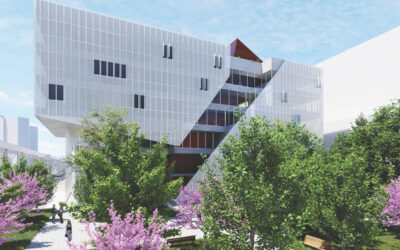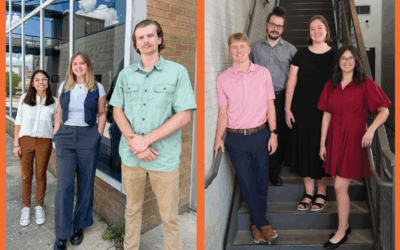In the intricate realm of healthcare architecture, Rich Walters stands as an instrumental figure, wielding mechanical engineering expertise to revolutionize healthcare infrastructure. As a distinguished mechanical engineer at Cromwell Architects Engineers, Rich brings forth a wealth of experience and a dedication to crafting spaces that transcend conventional design. His experience with healthcare projects unveils a profound impact on patient care and well-being.
“We’ve worked on all kinds of healthcare projects at Cromwell, and all have made a difference in patient well-being,” Rich said. “But the ones that truly stand out are the ones where we have the opportunity to witness our impact on people’s lives.”
Designing for healthcare facilities transcends conventional architectural and engineering considerations.
“Healthcare is a special market because of the direct impact we make on people’s lives,” Rich said. “When people’s lives, or their children’s lives, are at stake, it brings a whole new focus to the work we do.”
Balancing the technicalities of engineering with the human-centric needs of healthcare design remains a paramount concern for Rich. Precision and care in the craft of mechanical engineering design for healthcare facilities is critical.
“It’s the attention to detail of all technical aspects of engineering that ensures the human-centric needs of healthcare design are met,” Rich said.
An area of mechanical design that can be particularly challenging is the intricacies of operating rooms.
“Operating Rooms are heavily regulated, so their design is somewhat straightforward,” Rich said. “However, meeting these requirements, both in code and owner preferences, presents a unique challenge. No two operating rooms are ever identical, given the particular demands of doctors and nurses.”
Since no two designs are the same, innovation in mechanical design for healthcare projects is of the utmost importance to the engineers at Cromwell.
“Innovation is the fuel that feeds progress,” Rich said. “There will always be tried and true methods in design, but without innovation we can’t truly grow.”
Rich believes engineers’ collaboration with equipment manufacturers to continually look for ways to implement innovative materials and techniques into design is incredibly important and contributes to the improvement of indoor air quality and equipment efficiency.
“Engineering solutions not only impact patient care but sometimes dictate it entirely,” Rich said.
This statement was particularly true for a custom air handler recently designed for a cardio-vascular intensive care unit operating room. The operations performed in this room involve removal of vital organs and the space must be able to rapidly heat and cool to ensure the vitality of the organs and success of all surgeries performed.
“Without mechanical engineering innovations incorporated into this project, the entire operation and patient’s lives would be in far more peril,” Rich said. “It is this level of engineering innovation that allows surgical innovations to take place.”
Regarding the future, Rich envisions a landscape where emerging technologies pave the way for energy-efficient healthcare facilities.
“Our industry is uniquely positioned to leverage emerging technologies,” Rich said. “Designing systems that ensure energy efficiency and sustainability is maximized will define the future of healthcare facility design.”




